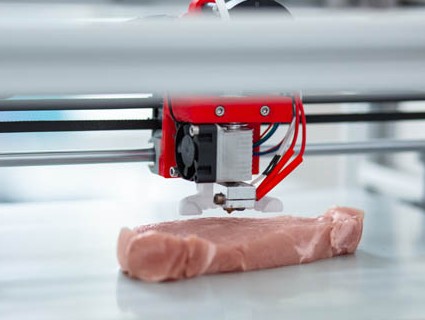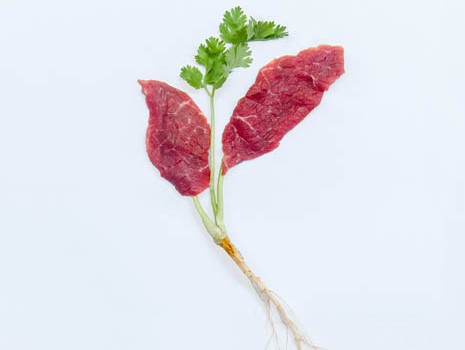
The agri-food sector is developing rapidly. The investments in Research & Development in the sector are the highest in the Netherlands in Europe. A source of inspiration for innovation is the consumer’s demand for ease, healthier and responsible. The demand and need for more sustainable food agriculture and production is also an incentive for innovation.
Every year, the AgriFoodTech Platform maps all facts and numbers of the agri-food sector in the so-called Snapshot. The most recent data (2018) shows that developments in the agri-food sector go hand in hand with technological innovation. The Dutch food industry is the European frontrunner in R&D expenses. The British, French and German food industries are in second, third and fourth place. This makes the Dutch food industry one of the most innovative of Europe.
The Rabobank also determined with recent numbers and trends that innovation in the food industry plays an important role. Innovations take place in, among others, distribution with the rise of offering products online and on omnichannel. In terms of production, innovation has traditionally been limited, but the Rabobank sees changes occur due to the higher requirements when it comes to allergen management, traceability, clean label and rapidly changing consumer preferences. The digitalisation of the production sector increases rapidly with robotisation, 3D printing and cloud computing, according to the bank. This developments affect every company in the sector. According to researchers, entrepreneurs can profit from this trend by taking four steps: determine the impact on your company, gather knowledge, experiment and start a business case.

‘The Dutch agri-food sector, on the whole, is a strongly innovative sector’ we read in the Snapshot. ‘To maintain this high level of innovation, we need strong green innovation. To remain a frontrunner in agriculture and horticulture and the food industry, green education should stay on its level and seek collaboration with ‘grey education’. The agri-food employee of the future, will have to develop knowledge of the technological and digital field besides knowledge of food.’
Someone who fully agrees with this is Ben Prins, company consultant, owner of Prins Management Consultancy, Business Development Advisor and teacher at Saxion University of applied sciences and Wittenborg University of applied sciences. He warns entrepreneurs to stay alert and react to the constant changes we deal with in this time of technological revolution in a timely manner. “The food industry deals with massive changes. To survive, the branch has to respond to the developments. We’re in the middle of a digitalisation transition. You won’t get away with a standard bookkeeping programme anymore. New hardware and software enable you to create process analyses that are necessary to adapt production processes to changing requirements.”
Being able to interpret and share Big Data is crucial according to the consultant. “Big Data is also called ‘the new lubricant for the digital era’. It’s a touchy point, because many large enterprises are afraid to exchange and share their data. But it also offers the opportunity to learn from each other, collaborate, optimise promises and increase turnover. Block chain technology, for example, can yield a lot. Such as transparency about the origin of your raw materials and preventing fraud in the chain.”
Prins also sees a lot of chances in robotics and cobots: robots that collaborate with people. “In Germany, they’re more advanced in this than in the Netherlands. They’re already used a lot in manufacturing, cultivation and in the distribution sector. Food producing industries in the Netherlands are falling behind in this. “The cause is perhaps unfamiliarity with the possibilities and the advantages that robotics offer.” He predicts this will change in five years, because there are plenty of opportunities: “On the production floor of processing companies, carcases are deboned manually. It’s hard work. I expect that robots with advanced vision technology will take over this work in the future.”
The technology is fully developing. For example, at ‘One of a Kind Technologies’ (at number 82 in the MKB Innovation Top 100-ranking 2017). His group of high-tech companies develops multidisciplinary mechatronic systems for the agri-food sector. They already designed an autonomously moving robot platform that independently recognises crops to then process them in a plant and biologically friendly manner (harvesting, pruning, packaging). The newest product of the group is a robot that, using machine-learning and machine-vision, recognises when cucumbers are ready to be harvested 24/7 and leaves others to grow a little longer. The chance of viruses spreading decreases due to this. Additionally, the robot provides a lot of data and information about the plants, including predictive data, which can be practical to growers. Another company, Cerescon, developed a robot for asparagus harvesting, the Sparter. Ben Prins understands that entrepreneurs sometimes lose sight of the big picture. “It all happens rapidly. The innovations of today can be outdated in two days. Still, my mentality remains: stay up-to-date, keep innovating. Else you miss out.”
With countless innovative products, the food industry reacts to the trends and demands of the consumers. All across the board, companies go for ease, healthier and responsible. Last year, for example, the Dutch Quinoa Group (DQG) got third place at the MKB Innovation Top 100, the ranking with 100 concrete innovations that Dutch mid-sized and small companies have managed to realise. DQG is the first complete vertically integrated Dutch quinoa chain from source to plate. And de Jong VOF from Werkhoven invented a system to breed crickets very efficiently at a large scale.
At the VanDrie Group, changing consumer needs are also an important trigger for innovating the assortment and as such, the innovations in product processes. “Recently, for example, new machines have been installed that can package veal with bone, for example veal cutlets, individually”, Patricia van Krieken, manager Marketing & Communication at Stichting Promotie Kalfsvlees (Promotion of Veal Foundation), says. “It’s wrapped with film as if it’s a second skin, a method that ensures that veal products have a longer shelf life. The individual packaging also provides new market opportunities for our clients.”

“One of VanDrieGroup’s new brands is JAN, after Jan van Drie, founder of the company. There are veal burgers, made of the parts from the shoulder and sous-vide products. Our experience is that there are only few people who take the time and have the knowledge to work with stewed meat products for hours. JAN’s products are therefore stewed in advance. A new feature is that packaging in done in vacuum. The advantage of this is that all flavour is maintained. The meat is lightly seasoned, so the buyer can add more flavours if desired. The most important thing is that the consumer has to do little.”
Applying robotics in the production isn’t very common yet in the meat processing industry. “In our locations abroad, we use it more. Our products have no standard shape, which makes it a hard process to automate, it’s all quite complicated.”
The collaboration between the high-tech and ICT sector with the agri-food sector gets ever closer and more professional. A beautiful example is the new ‘Digital Food Processing Initiative’ (DFPI) that was officially launched in Wageningen on June 29 of this year. DFPI is an initiative of Wageningen University & Research (WUR), TNO, AMSYSTEMS and the Eindhoven University of Technology (see also the interview with Joost Blankestijn). The Provinsje Fryslân, business and education jointly invested € 6 million in an innovation centre for food technology: the FACT at Hogeschool Van Hall Larenstein and MBO Life Sciences in Leeuwarden. Food companies in the north of the Netherlands can use it to do research, experiment and innovate.
Society is asking a lot of the agri-food sector, such as smart solutions for large matters of this time. Think of reducing the wasting of food, the world’s food problem, improving transparency and food safety, lowering the CO₂ emission and producing healthy food. Big Data, Internet of Things, robotisation, improved sensors, etc. will provide a huge contribution to the continued development of a Smart Food System in the upcoming years.
Source: © Dmytro Zinkevych/Shutterstock.com; Pixhound/Shutterstock.com; Pixabay